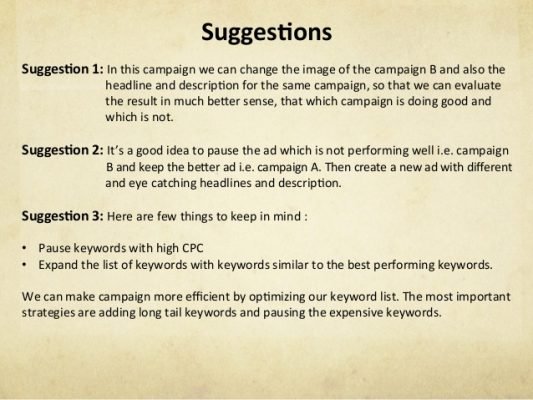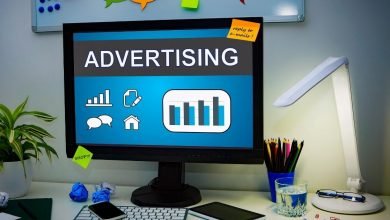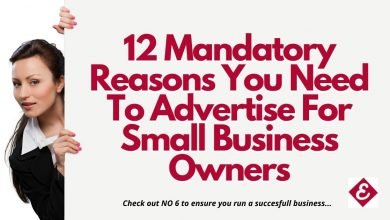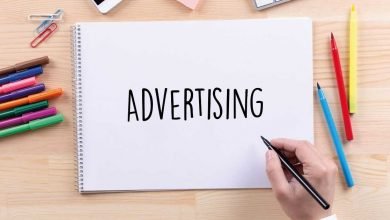The Top 7 Most Effective Stages Of Advertising In Marketing
The stages of advertising can be viewed as the systematic procedures advertisers leverage while setting up a promotional campaign for a brand, product or service.
…aside creating awareness and leads generation, the essence of this process is to ensure the advertisement is successful by birthing a possible high return of investment (paying clients).
Moving forward…
In this article, you’re going to know:
Firstly, the stages of advertising which has to do with the systematic procedures … (whose definition you just read)
And secondly, the…
Table Of Contents
Stages Of Advertising Spiral
In a few words, this has to do with the different motive or idea of a company behind a particular advert.
You’ll get to understand what the SPIRAL aspect is all about in a moment…
but for now, let’s dive into the business of the day right away.
Chapter 1:
7 Stages Of Advertising
1. Identify target audience
Product and or services are innovated based on an identified need or want by a decent amount of people.
In other words, products and or services are a possible solution to a group of people with a certain type of problem.
What are my saying?
Your target audience are simply the category of people whose problem (need or want) your solution (product) is built to solve.
In summary, your target audience are the end users of your product.
Now:
There’s nothing worse than misjudging or falling at identifying who your product is meant for.
Why?
Because if you fail at this, you’re most likely to fail at the next step and then the next one… And then the next.
Bottom line:
You’re most likely to fail at everything.
For example:

Kids (to an extent) do more noodles than adults…
Now, let’s say you’re into advertising noodles and you fail at identifying your target audience, which are kids…
…therefore, Instead of displaying the advert at around – let’s say 3 or 4pm…
…when the kids are back from school and focused on their favourite T.V show; you are more likely to schedule it to air by 7 – 8 am.
A time when they’re either preparing for school or on their way to school.
Now, when they don’t see it, how do you expect them tell mummy they want some noodles?
So as an advertiser, you need to know misjudging your audience is never an option. It’s more or less like winking at a beauty in the dark. POINTLESS. USELESS… because you won’t be seen.
How do you then identify your ideal potential customers?
You want to study a demographic research or do one yourself.
Demographics include: age, sex, family status, education, trends, income etc.
2. Determine advertising objectives.
An advertising objective is the degree of understanding an advertiser wants to achieve with the target audience by running a promotional campaign at a particular time.
The motive behind every advert is to pass a message to the target audience…
In essence, this is the stage of advertising whereby you as an advertiser, carefully ponder on the exact type of idea/message you intend to convey to your audience.
In most cases, advertising objectives falls in either of the three (3) categories below :
- To create awareness & inform
This is when the ads passes a message to prospects about a new product and also the features/benefits it entails.
- To convince
The message here is to persuade prospects to switch to a new brand (your brand).
- To remind .
Here, the objective is to keep the advertiser’s product fresh in the mind of your prospect…
…this is to ensure the advertiser’s product comes to mind first when a need that is related to the advertised product arises.
Bottom line:
After identifying your target audience, determine the specific message you want your campaign to directly convey when it go live.
For example : Every ads on KFC you watch is always a reminder to try some. Right?…
…so the objective is non other than To remind . This is because you’ve been successfully informed and convinced in the past.
3. Select advert media
Advertising medias are those technological artefacts marketers, business owners, firms, and advertisers in general use in propagating promotional messages about a product or service to their target audience.
There are different types of advertising media … Some of which include commercial radio, television, film advertising, newspaper etc…
…social media (the likes of Facebook, Twitter, Instagram ads etc) is also worth mentioning.
Now:
Selecting the right medium is key. And should be done based on the following factors…
- Reach
This is where you ask yourself… What medium will best ensure my ads reach a decent amount of my target audience?
- Frequency
…and how many times will they be exposed to the promotional campaign?
For instance:
Oldies do more radio than social media.
So when advertising a product or service for older/aged people, you want patronize certain programs on radio stations with huge traffic.
This particular advertising medium could expose your message to them at least 2 – 5 times on a daily basis… Which is very unlikely if you target them via social media.
- Media impact
This factor has to do with — which — out all the available advertising mediums — will have more impact on your target audience.
In my opinion, i think the easiest way to figure this out is to look at what has worked in the past for your competitors.
That way, you can easily guess correctly what’s working for your offering and audience. Plus, you’ll have to shift your focus to step 4 in no time.
4. Create advertising content
This is the stage of advertising whereby you create promotional content for your campaign.
The content could be in words (written), video format or the combination of both.
Most importantly, you want to make sure your advertising content meets the following criteria at least.
- Firstly, It should be meaningful.
Your audience is all that matters… So you want to make sure they find your ads content engaging and relevant.
- Secondly, the content must be Distinctive
Selective Attention is one of the barriers to effective communication … And this occurs when an adviser fails to grab the attention of his audience due to a distractions they’re faced with on a daily.
Look:
According to research, the average person is now estimated to encounter between 6,000 to 10,000 ads every single day… If you ask me, that’s a lot.
So as an advertiser, you want to work on a promotional content that will immediately seize the attention of your target audience.
And one of ways to achieving this is working on an eye popping – attention grabbing headline.
The saying goes thus:
On average, 8 out of 10 people will read headline copy, but only 2 out of 10 will read the rest… You want to make sure you get at least 5 to read the rest.
- Lastly, your message should be believable.
Ads have been judged to be misleading… Therefore, you want to keep it real, avoid misinformation and make sure they get what they see. That is how you get more testimonies and referrals.
Lest i forget:
Your content should be designed to fit your preferred choice in step 3. Plus, aside the use of headlines grab audience attention, noise and songs could come in handy.
5. Select advert budget

Although it appears simply and pretty straight forward, this is one of the most delicate stages of advertising.
There are lots of decisions to be made here as an advertiser.
First off, how do you predict the right amount to spend?
Secondly, the aim of every advertisement is to create demand for a product. Plus, you should also be targeting a reasonable return of investment… That’s after the estimated advert cost and the cost of producing the product.
Now:
How do you then intend to come up with a price that won’t be seen as too cheap? (thereby causing your product to be seen as of low quality)… Or one that’s too high and judged to be overpriced? (thereby causing clients to neglect your product)
Bottom line?
Strike a balance by justifying the price of your product with the endless benefits and bonuses clients tends to get from patronizing you.
For example:
I remember buying a course because the advertiser highlighted (as part of the bonuses) a free lifetime consultation service on any online business… Till now, i’m yet to leverage that option.
People buy cars and expensive gadget due to warranties they don’t even use.
At the end of the day, your ads cost will turn out to be a token if you get your audience right and the promotional message is at least informing and convincing enough.
6. Run test ads
This stage of advertising is as easy as it sounds.
But:
Your ability to run test ads is limited to the choice of advertising media… At least to an extent.
For instance…
While leveraging social media for your promotional campaign, it’s highly recommended to let the ads run 48 – 78hrs max to arrive at a conclusion on if it will do well or not.
However, i’m not sure you’ll get the same opportunity for television, radio, billboard and the likes.
But the kicker here is this:
Run two adverts at least — promoting the same product or service… but with different copy, art work, video or whatever you’re using to capture your audience attention and communicate your product to them.
Unless you’re very sure, a little tweak on demographics (e.g age) of your target audience and also timing the ads will run won’t be a bad idea.
Remember, the essence of this stage is to identify what will work… So you can either go all in or back off.
7. Evaluate ads campaign result
Did i also mention you can leverage two or more entirely different advertising mediums?…
…and then compare results to see which you’ll stick with long term?
Here’s how it works:
Instead of focusing on one platform (e.g television or Facebook), you can combine it with Google ads, Instagram and Youtube ads.
Remember you never can be too sure on which platform will bring the best/highest conversions… So if you can, you want to keep testing.
However, in terms of evaluating those ads results to see which is best… You want to look at the two factors below.
- Communication effect
Is the intended message being communicated effectively and to the intended audience?
- Sales effect
Has the promotional campaign generated the intended sales growth?
While your eyes will be more fixated on the sales effect…
remember this:
people buy not because they understand what you’re selling, but because they feel understood.
And without effective communication, how do you make them feel understood? And if they don’t feel understood, how do you make them buy?
See image below for suggestions on how to evaluate ads result.

Hope you got the idea? Good.
Also See:
Chapter 2:
Stages of Advertising Spiral
The concept of advertising evolves in three (3) stages. This is because as companies grow, the motive or idea behind a particular advert changes.
1. Pioneering advertising
Here, the company simply leverage ways of getting their marketing message across to their target audience.
Company’s advert follow a basic formula:
- A product is shown
- A need is established in the customer’s mind
- An illustration is given on how the product will solve the customer’s need
This stage of advertising spiral is done by a new company or an existing company with a new product.
And most importantly, the advertisement must perform the function of educating the audience on how to the product works… That’s the ultimate goal.
2. Competitive advertising
Now that the target audience now have an idea of the product and how it works.
In the competitive stage, the company uses advertising to pass a message of superiority of their product or service over that of their competitors.
In other words, this stage of advertising spiral is one in which a company focus more on the benefits of their product…
…the aim is to paint a picture in the mind of their target audience that:
Our product is better than similar ones out there.
Arguably, this is exactly what Apple Inc has successfully done over the years.
3. Retentive advertising
At this stage of advertising spiral , the company now run promotional campaigns in other to remind their target audience about their product or service.
For example:
I am fan of Adidas right? But while going through my feed a few weeks back, i saw this angels from Nike.

Nike is a household name. I do not need any convincing to buy a product from them. Nevertheless, i saw those on my way to a movie so i wasn’t 100% captured…
After the movie, i completely forgot i had seen some cool stuffs from Nike i would like to own…
…fast forward to the exact day i am working on this article, i saw the same advert on my feed again and i remembered i needed a pair from those collection.
Bottom line?
Initially i was lost, but now i am found.
Companies understand a few customers do not need any convincing to own their product.
They already know about it and they liked it, but they tend to forget due to other daily activities…
…and that’s why retentive advertising is leveraged in other to remind their target about their product.
So that’s that on the stages of advertising and the stages of advertising spiral respectively.
Read next:
What are the reasons for advertising?
What are the various types of advertising in marketing?
Over To You!
Use the comment section…
…let me know your take on the above stages of advertising.
I don’t know it all, so your contributions, corrections, and suggestions are very much welcome!.
Thanks for reading.





It’s extremely hard to locate educated people in this subject,
but you appear like you know what you’re speaking about!
Thanks
I am really impressed with the information and the way you explained the various stages of advertising we have in marketing
This is what I am looking for all this while.
Thanks for coming through.
My pleasure Gray.
Great post, you have pointed out some wonderful details which I really liked.
Thanks for stopping by kesh